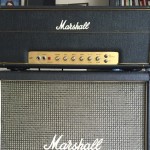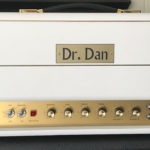 Many amplifiers have come and gone in my music room through the years, and a small handful have been genuinely missed. One in particular that I was always interested in having back in the fold was an original 1968 Marshall model 1959 Super Lead with the serial number range in the 12,000s. I owned just one many years ago but had needed to sell it, along with many other pieces, during a more challenging time in life. The memory of that amp remained with me through the years that followed as it had that perfect blend of creaminess and crunch in its tone as well as a feel that delivered the perfect amount of compression. Indeed, it was truly one of the good ones. And no doubt the best Marshall I’ve ever had.
Many amplifiers have come and gone in my music room through the years, and a small handful have been genuinely missed. One in particular that I was always interested in having back in the fold was an original 1968 Marshall model 1959 Super Lead with the serial number range in the 12,000s. I owned just one many years ago but had needed to sell it, along with many other pieces, during a more challenging time in life. The memory of that amp remained with me through the years that followed as it had that perfect blend of creaminess and crunch in its tone as well as a feel that delivered the perfect amount of compression. Indeed, it was truly one of the good ones. And no doubt the best Marshall I’ve ever had.
Continue reading
Category Archives: Amplifier Reviews
Will my Hot Mod V2 Evo, Mr. Scary, or Caswell 1987 Mod work in my amp?
Perhaps this is the most common question we receive here when people first inquire about the Hot Mod V2, Mr. Scary Mod, or Caswell 1987 Mod. And of course we also offer a reverse-wired version so that either model can also function in many of the reissue amps which the original Soldano Hot Mod could not. In general, although there are non-master and master volume amps listed here, note that all of our mod devices generally work better if your amp has a master volume on it. So here is the list:
SOLD OUT for 2020 – Stay tuned for a new model! Hot Mod V2 Now Available for Marshall Studio Series Heads!
We’re excited to announce that we have engineered the Hot Mod V2 to now work within two of the newest Marshall Studio Series amps: the Studio Classic, a portable replica of the JCM 800 2203, and the Studio Vintage, Marshall’s mini version of the famed 1959SLP non-master volume amp.
Marshall 1976 JMP Model 2203 Master Volume Rebuild Project
When people most often think of vintage Marshalls, the most highly regarded are the non-master volume series including the model 1959 100 watt head produced in the late 1960’s and early 1970’s. It’s hard to argue against the amp that Hendrix, Page, Van Halen, Clapton and many others used.
And while I would agree that they are incredible amps, the REAL game changer in my mind for Marshall was when the company introduced its master volume series of amps in 1976. The models 2203 (100 watts) and 2204 (50 watts) heads became instant hits, and quickly began to outsell the non-master volume versions by the late 70’s. Why? Well, they sounded great at more reasonable volumes which essentially made them more practical for guitarists who couldn’t always play at full volume and crank up a non-master volume Marshall inside a concert arena.
Continue reading
The Legend of the Soldano Super Lead Overdrive
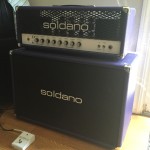 Michael Soldano had no intentions of becoming a guitar amp maker. Prior to the launch of the first Soldano Super Lead Overdrive (SLO), he dreamed of rock stardom and not amp building. But it was during these early days while he was on his tone quest that he realized he wasn’t fully satisfied with the amplifiers that were available at the time.
Michael Soldano had no intentions of becoming a guitar amp maker. Prior to the launch of the first Soldano Super Lead Overdrive (SLO), he dreamed of rock stardom and not amp building. But it was during these early days while he was on his tone quest that he realized he wasn’t fully satisfied with the amplifiers that were available at the time.
Continue reading
Magus Innovations’ “The Ultimate Attenuator”
When any new product comes out that takes an interesting new twist on a design, it of course always piques my curiosity to check them out. I was recently contacted by a new maker of a device called "The Ultimate Attenuator" that falls into just that category. If you’re unfamiliar with power attenuators, they simply enable you to take the signal of a fully-cranked tube amplifier and then bring the volume levels down to those necessary to play in various club/rehearsal environments – and some designs can power down to bedroom levels as well.
Continue reading
Weber MASS Attenuator
The past several years have brought about an era of reinvigoration for vintage non-master volume style amplifiers and I believe some of the reason is due to the fact that there are some great choices for attenuators out on the market today. Everyone knows that there is nothing that can harmonically compare to the tone of a quality vintage tube amp cranked up with its warm power tube distortion running along with its preamp gain. But the trick has been trying to capture that great tone at lower volumes and that’s where an attenuator can come in very handy.
Continue reading
Fender 59 Bassman LTD
 The Fender Bassman evolved as an amplifier designed to initially go along with the Fender Precision Bass. It’s perhaps a bit of an irony that this amp design is among the most revered from guitarists – not bass players. Add to this the fact that the first Marshall amplifiers were largely leveraged from the Bassman’s circuit design (which in turn spawned a countless array of further clones as time passed), and it’s easy to understand why the Fender Bassman was the first amplifier chosen as a tweed reissue in the early ‘90s.
The Fender Bassman evolved as an amplifier designed to initially go along with the Fender Precision Bass. It’s perhaps a bit of an irony that this amp design is among the most revered from guitarists – not bass players. Add to this the fact that the first Marshall amplifiers were largely leveraged from the Bassman’s circuit design (which in turn spawned a countless array of further clones as time passed), and it’s easy to understand why the Fender Bassman was the first amplifier chosen as a tweed reissue in the early ‘90s.
Marshall Hand-wired Reissue 18 Watt Combo and 20 Watt Head/Cabinet
Introduction
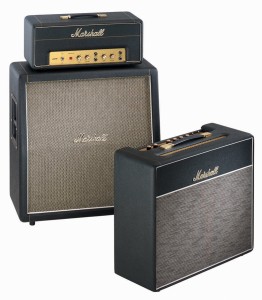 Marshall’s long-awaited handwired series reissue amplifiers are finally here with the debut of the company’s 1974X model 18-watt combo and 2061X model 20-watt head with 2061CX cabinet. These first reissue models are based on the originals produced in the ‘60s and ‘70s and Marshall has assured us that every attention to detail has been made. And these are not limited-edition reissues, but are part of Marshall’s regular production lineup!
Marshall’s long-awaited handwired series reissue amplifiers are finally here with the debut of the company’s 1974X model 18-watt combo and 2061X model 20-watt head with 2061CX cabinet. These first reissue models are based on the originals produced in the ‘60s and ‘70s and Marshall has assured us that every attention to detail has been made. And these are not limited-edition reissues, but are part of Marshall’s regular production lineup!
Even the included manuals proudly cover the story of the many detailed aspects of the design and development. From the cosmetic finish to the construction details of the transformers and customized speakers, it is clear that Marshall team set out on a mission to create the ultimate reissues.
Continue reading
THD Electronics Flexi 50 Amp Head
"Wait a minute, this amp isn’t a clone of a plexi Marshall?!"
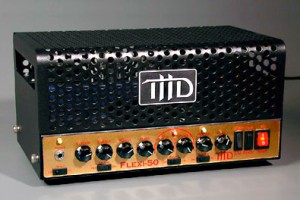 That was my initial thought when plugging into this amp for the very first time. And that’s actually a good thing for many users who will enjoy the added flexibility of the many tonal options presented by THD Electronic’s new Flexi 50 amplifier. Though my initial idea really was to pit a ’68 50 watt Marshall against the THD Flexi-50 amplifier head, it was clear from both looking at and listening to the Flexi-50 that this would have been an apples to oranges type of comparison. The Flexi-50 offers quite a bit of tonal and feature-set variety and it would be inappropriate to simply compare it to one single amplifier.
That was my initial thought when plugging into this amp for the very first time. And that’s actually a good thing for many users who will enjoy the added flexibility of the many tonal options presented by THD Electronic’s new Flexi 50 amplifier. Though my initial idea really was to pit a ’68 50 watt Marshall against the THD Flexi-50 amplifier head, it was clear from both looking at and listening to the Flexi-50 that this would have been an apples to oranges type of comparison. The Flexi-50 offers quite a bit of tonal and feature-set variety and it would be inappropriate to simply compare it to one single amplifier.
Perhaps I subconsciously took the name "Flexi" and associated it mostly with a 1960’s plexi-era Marshall. In any case, Andy Marshall, THD’s President explained it best: "It’s named the Flexi-50 because of its flexibility in being able to capture vintage British and American tones."
Continue reading
